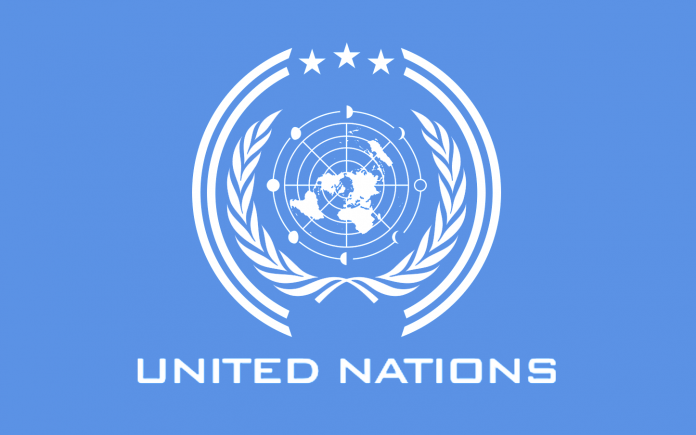Pakistan is anticipated to post “moderate growth, stabilising after a period of economic contraction,” with its Gross Domestic Product (GDP) forecast to grow by 2.3% in 2025, according to the United Nations’ latest global economic outlook.
Released just a day ago, the UN World Economic Situation and Prospects 2025 report highlighted easing inflation across South Asia, enabling most central banks in the region to either begin or continue loosening monetary policy this year. However, countries such as Pakistan, Bangladesh, and Sri Lanka are projected to persist with fiscal tightening and economic restructuring under ongoing International Monetary Fund (IMF) programmes.
South Asia, overall, is expected to maintain a strong near-term outlook, with regional growth pegged at 5.7% in 2025 and rising to 6% in 2026. This performance is largely supported by India’s economic momentum and recoveries in other countries like Bhutan, Nepal, and Sri Lanka.
Globally, however, the economic environment remains fragile. The UN warns that escalating trade tensions and increased uncertainty in policy are shaking investor confidence and dampening capital spending. A notable rise in tariffs—especially in the United States—has sharply pushed up effective tariff rates, raising production costs, unsettling supply chains, and increasing the risk of financial volatility.
The cumulative impact of policy unpredictability, geopolitical instability, high debt burdens, and sluggish productivity is threatening to derail global growth. The report revises global GDP growth downward to just 2.4% in 2025, down from 2.9% in 2024 and 0.4 percentage points lower than the UN’s January 2025 projection.
Compounding matters, global trade is expected to lose significant steam—dropping from 3.3% growth in 2024 to just 1.6% in 2025. This weakening trade environment, combined with persistent inflation and lower investment, poses serious risks to achieving the Sustainable Development Goals (SDGs).
The slowdown is widespread, affecting both developed and developing nations. The United States is projected to see GDP growth fall from 2.8% in 2024 to 1.6% in 2025, as rising tariffs and uncertain policy environments suppress consumer spending and business investment. Growth in the European Union is expected to remain flat at 1% in 2025, hindered by declining net exports and higher trade barriers.
China’s economic expansion is forecast to slow to 4.6% this year, citing weak consumer confidence, obstacles in manufacturing exports, and persistent difficulties in the property sector. Other emerging economies such as Brazil, Mexico, and South Africa are also seeing growth projections trimmed, driven by falling commodity prices, declining investments, and softer trade.
India’s growth has also been revised slightly downward to 6.3% in 2025, though it still remains one of the top-performing major economies.
“The tariff shock risks hitting vulnerable developing countries hard, slowing growth, slashing export revenues, and compounding debt challenges, especially as these economies are already struggling to make the investments needed for long-term, sustainable development,” warned Li Junhua, United Nations Under-Secretary-General for Economic and Social Affairs.
Although global headline inflation fell from 5.7% in 2023 to 4% in 2024, inflation remains above pre-pandemic norms in two-thirds of all countries by early 2025. Over 20 developing economies are still grappling with double-digit inflation. Food inflation continues to hover above 6%, placing significant strain on lower-income households, particularly in Africa, South Asia, and Western Asia.
Trade restrictions and climate-induced disruptions are further exacerbating inflationary pressures. The report urges governments to adopt coordinated responses, combining sound monetary policy, targeted fiscal support, and comprehensive long-term strategies to stabilise prices and support vulnerable populations.
Monetary authorities in many nations now face increasingly difficult trade-offs. While trying to contain inflation—often worsened by tariff-induced cost increases—they also need to support decelerating economies. Meanwhile, fiscal limitations in developing countries reduce the scope for meaningful intervention.
The report also highlights the deteriorating global development outlook. For the least developed countries, GDP growth is expected to dip from 4.5% in 2024 to 4.1% in 2025. Shrinking export revenues, tighter financial conditions, and falling development aid inflows are compounding debt risks and narrowing fiscal space.
Heightened trade frictions are weakening the multilateral trading system and deepening marginalisation for small and vulnerable economies, the UN warns. It calls for renewed multilateral cooperation, with an emphasis on reforming global trade rules and offering targeted aid to struggling countries to help drive equitable, sustainable growth.
The upcoming Fourth International Conference on Financing for Development, scheduled in Sevilla, Spain from June 30 to July 3, is expected to serve as a pivotal forum to tackle issues like debt sustainability and financing strategies, and to promote actionable solutions for sustainable development worldwide.
























